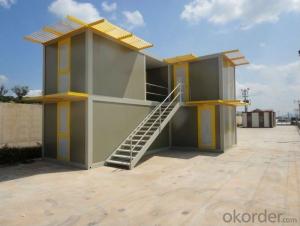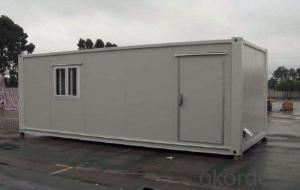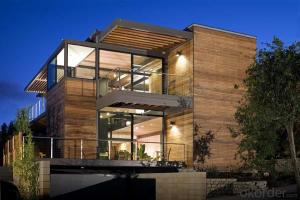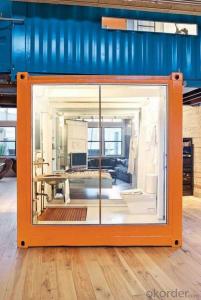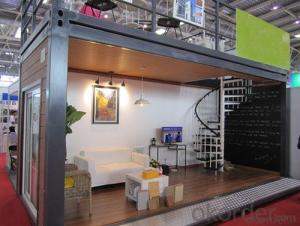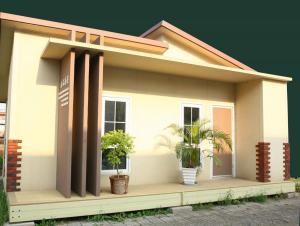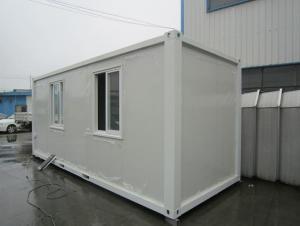High quality decorated movable container house
- Loading Port:
- China Main Port
- Payment Terms:
- TT OR LC
- Min Order Qty:
- -
- Supply Capability:
- -
OKorder Service Pledge
OKorder Financial Service
You Might Also Like
High quality decorated movable container house
Description
The container house is movable as a whole unity. This kind of container house is reusable usually as offices in domestic areas other than as habitable houses. Using a kind of 1150 modulus design, with security nets, doors and floor tile, its firm and safe. Cabinet unit structure for the introduction of steel and cold-formed steel welded together to make up standard components. The house can be designed just as just one unit or connected to a whole from several boxes, by simple connection such as bolts. Easy to assemble.
Container house has a wide range of applications. It can be used in temporary construction site, commercial industry, civil, military and other fields.
Technical Parameters
1).Designed and developed according to the standard size of shipping container;
2).Heatproof and waterproof;
3).Widely used as office, meeting room, dormitory, shop, booth, toilet, storage, kitchen, shower room, etc.
4).Size: 6058 * 2435 * 2790mm;
5).Components: adopts EPS, PU, or rock wool as heat insulation material;
6).All the components of the container house are up to standard and prefabricated with the advantage of easy installation and uninstallation.
7).Easy assembly and disassembly: Only six skilled workers are needed to finish three modular units in 8 hours;
8).One 40ft HQ container can load six sets of 5,950 x 2,310 x 2,740mm standard units or six sets of 6,055 x 2,435 x 2,740mm standard units;
9).The standard unit can be connected together at any direction or stack up to two or three stories;
10).Waterproof design of structure, fireproof, and heat insulation of material ensure the house to resist heavy wind load of 1.5kN/m2 and 7° seismic intensity;
11).Lifespan of the house: 20 to 25 years.
Advantage & Basic Design

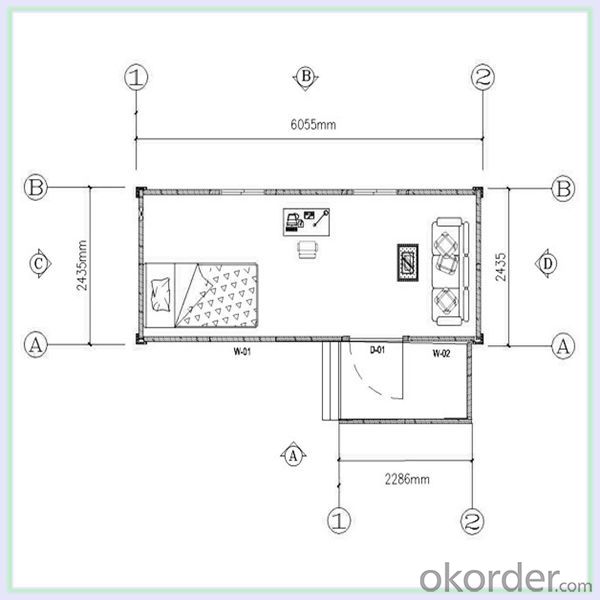


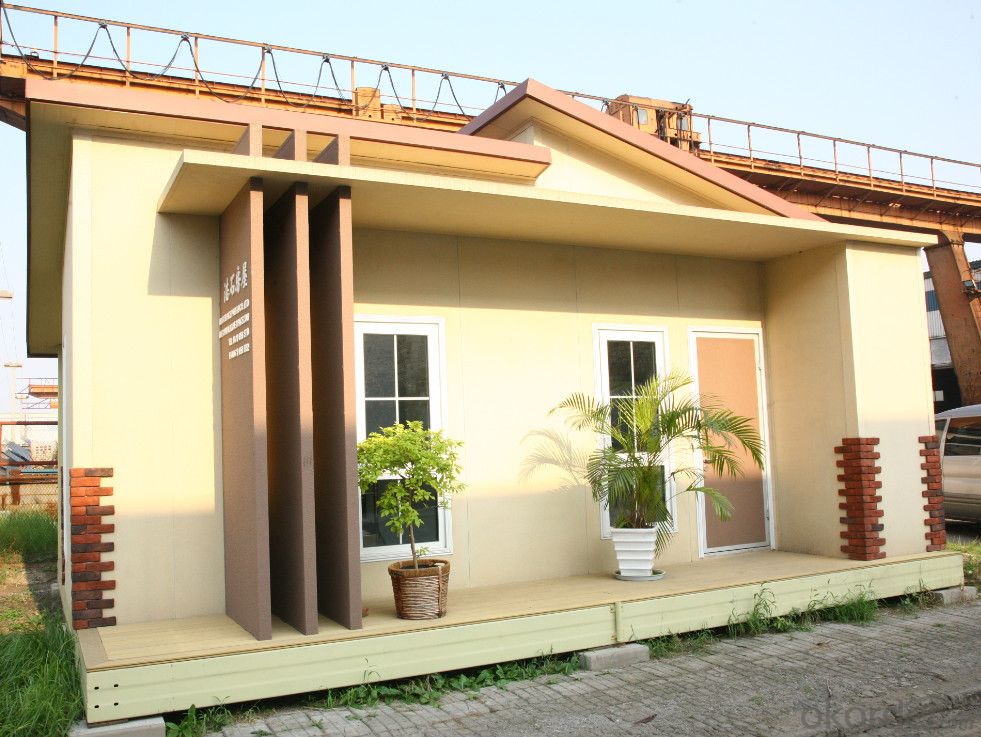
| Construction Efficiency | 2 worker in one day for one unit |
| Long life time | Max. 20 years |
| Roof load | 0.5KN/sqm (can reinforce the structure as required) |
| Wind speed | designing wind speed: 210km/h (Chinese standard) |
| Seismic resistance | magnitudes 8 |
| Temperature | suitable temperature.-50°C~+50°C |
Factory & Shippment
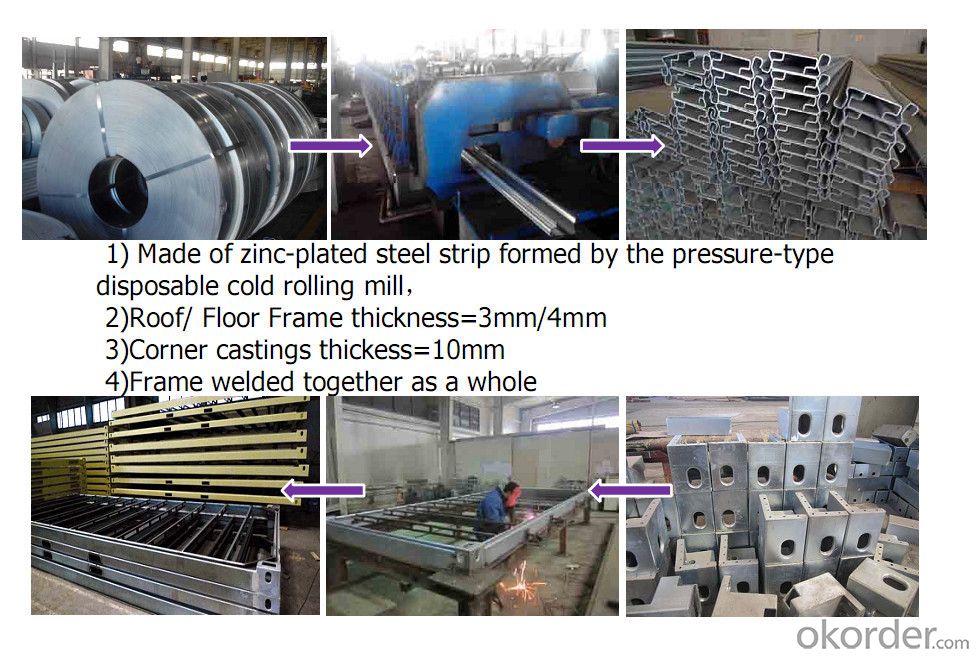
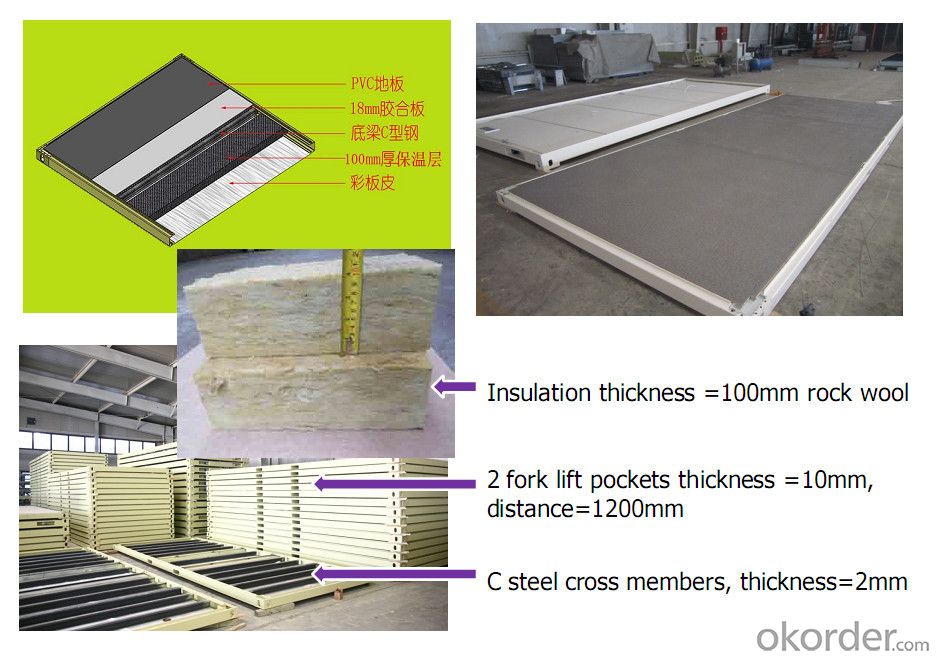
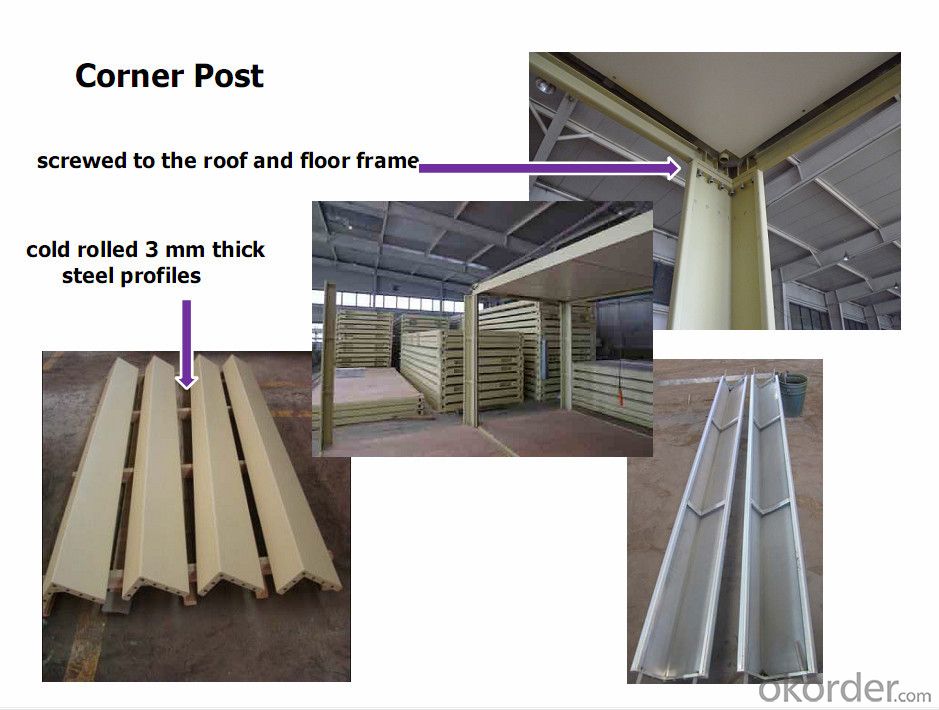

Application
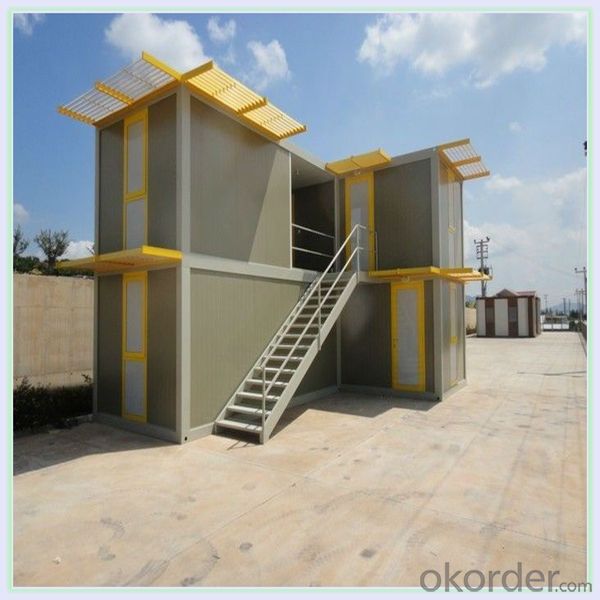
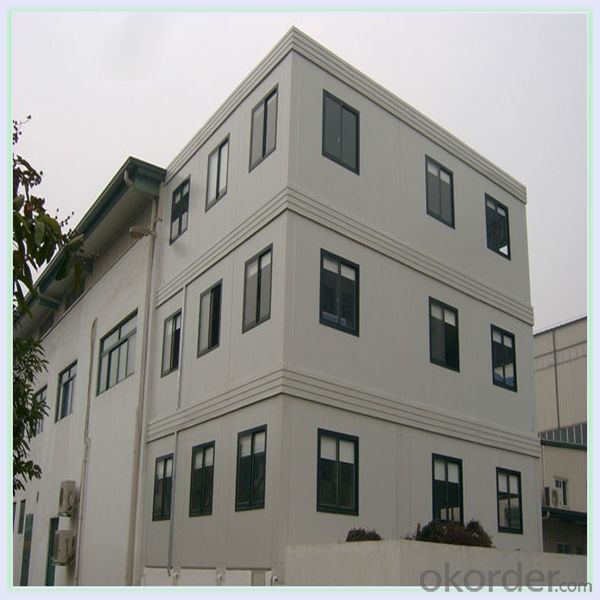
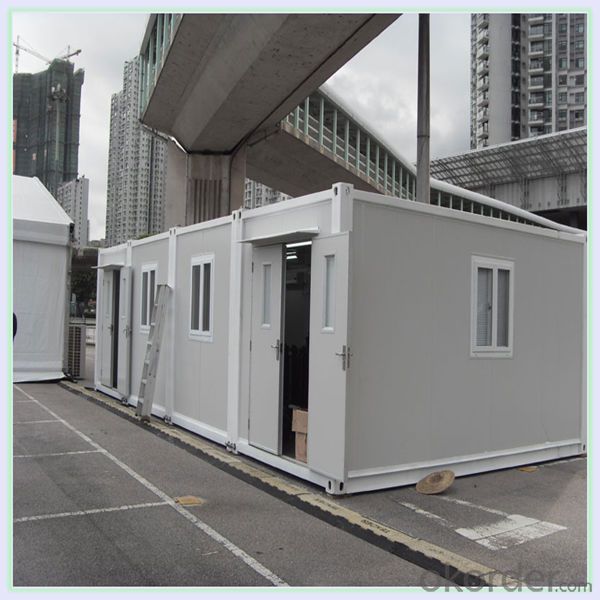
- Q:Are container houses suitable for individuals who frequently relocate?
- Yes, container houses are suitable for individuals who frequently relocate. Container houses are designed to be easily transportable, making them a great option for individuals who need to move frequently. They can be easily loaded onto trucks or ships and transported to a new location without much hassle. Additionally, container houses are compact and can be quickly assembled or disassembled, allowing for easy setup and takedown during relocation.
- Q:Are container houses prone to condensation or humidity issues?
- Container houses can be prone to condensation or humidity issues if not properly insulated and ventilated. The metal walls of shipping containers have a high thermal conductivity, which means they can easily transfer heat and moisture. Without proper insulation, the temperature inside the container can fluctuate drastically, leading to condensation when warm air meets colder surfaces. This can result in moisture buildup, leading to mold, mildew, and potential damage to the structure. However, with proper insulation and ventilation, container houses can effectively manage condensation and humidity. Adding insulation materials such as spray foam, rigid foam boards, or mineral wool can help regulate the internal temperature and prevent moisture buildup. Additionally, installing proper ventilation systems like vents, fans, or dehumidifiers can help control humidity levels within the container. It's important to note that the location and climate also play a significant role in determining the likelihood of condensation or humidity issues. In regions with high humidity, such as coastal areas, extra precautions should be taken to ensure sufficient insulation and ventilation to prevent moisture problems. In summary, while container houses can be prone to condensation or humidity issues, proper insulation and ventilation can effectively mitigate these problems. It's crucial to invest in quality insulation materials and design a well-ventilated system to maintain a comfortable and moisture-free living environment inside the container house.
- Q:Are container houses suitable for areas with limited access to construction materials?
- Yes, container houses are suitable for areas with limited access to construction materials. Container houses are constructed using shipping containers, which are readily available and can be transported even to remote areas. These containers provide a strong and sturdy base for building a house, making them suitable for areas with limited access to traditional construction materials. Additionally, container houses can be easily customized and modified to fit the specific needs and climate conditions of the area. They can also be designed to be self-sufficient, incorporating renewable energy sources and water collection systems, further reducing the reliance on external construction materials and resources. Overall, container houses offer a viable solution for areas with limited access to construction materials, providing a quick, cost-effective, and sustainable housing option.
- Q:Can container houses be designed with a vintage or retro-inspired look?
- Certainly, container houses can be designed with a vintage or retro-inspired appearance. With a touch of creativity and thoughtful design choices, container houses can become one-of-a-kind and stylish homes that reflect a vintage or retro aesthetic. One approach to achieving a vintage or retro-inspired look in a container house involves the use of various materials and finishes. For instance, incorporating reclaimed wood or distressed metal accents can instantly create a rustic or industrial vibe reminiscent of past eras. Vintage-inspired wallpaper or tiles with retro patterns can also be utilized to establish a nostalgic atmosphere. Another crucial aspect in achieving a vintage or retro look is the selection of furniture and decorations. Opting for vintage or thrifted pieces can add character and charm to the space. Vintage-inspired lighting fixtures, curtains, and upholstery can also contribute to the overall retro ambiance. When it comes to the color palette, choosing muted or pastel shades that were popular in the past can enhance the vintage or retro look. Earthy tones, such as mustard yellow, olive green, or burnt orange, can evoke a 70s vibe, while pastel colors like mint green or powder blue can create a 50s or 60s aesthetic. Furthermore, architectural details play a significant role in achieving a vintage or retro-inspired look. Incorporating elements like exposed brick walls, arched doorways, or decorative moldings can add a touch of nostalgia. Additionally, selecting retro-inspired fixtures, such as clawfoot bathtubs or vintage-style faucets, can also contribute to the overall vintage feel. Ultimately, the key to designing container houses with a vintage or retro-inspired look lies in carefully selecting and combining different elements that evoke the desired aesthetic. By considering materials, furniture, colors, and architectural details, container houses can be transformed into unique homes that radiate a vintage or retro charm.
- Q:Are container houses suitable for campgrounds or glamping sites?
- Campgrounds or glamping sites can consider container houses as a viable option. These houses provide several advantages that make them perfect for such accommodations. Firstly, containers are resistant to weather and durable, which makes them suitable for outdoor environments. They can endure harsh weather conditions, ensuring the safety and comfort of guests. Furthermore, container houses are easily transportable and can be set up with ease, allowing for flexibility in terms of location and design. They can be tailored to create distinct and visually pleasing accommodations, enhancing the glamping experience. Additionally, container houses are environmentally friendly as they repurpose unused shipping containers, reducing waste and promoting sustainability. They can be equipped with eco-friendly features like solar panels and rainwater harvesting systems, further enhancing their suitability for campgrounds or glamping sites. All in all, container houses offer a cost-effective, durable, flexible, and eco-friendly solution for campgrounds and glamping sites, making them a suitable choice for these types of accommodations.
- Q:Can container houses be designed for adventure or outdoor tourism accommodations?
- Yes, container houses can be designed and modified to cater to adventure or outdoor tourism accommodations. The versatility and mobility of container houses make them ideal for creating unique and sustainable lodging options in remote or nature-filled locations. With proper insulation, ventilation, and additional amenities, container houses can provide comfortable and eco-friendly accommodations for outdoor enthusiasts seeking an adventurous experience.
- Q:Do container houses require a foundation?
- Yes, container houses require a foundation. A strong and stable foundation is necessary to provide support and stability for the structure, especially since container houses are typically heavy and may require additional reinforcement.
- Q:Can container houses be built with a contemporary design?
- Absolutely, container houses can be constructed with a contemporary aesthetic. The utilization of shipping containers as a construction material has become increasingly popular in recent years due to their affordability, sustainability, and versatility. By employing the appropriate design and architectural expertise, container houses can be transformed into fashionable and modern homes. Contemporary design is characterized by its sleek and minimalist appearance, clean lines, and incorporation of modern materials. These principles can be easily implemented in container houses. Architects and designers have the ability to integrate large windows and glass doors, creating an open and airy ambiance that maximizes natural light and blurs the distinction between indoor and outdoor spaces. Furthermore, container houses can be customized with a variety of exterior finishes and materials in order to achieve a contemporary look. This can involve cladding the containers with materials like wood, metal, or fiber cement panels, resulting in a more refined and sophisticated appearance. When it comes to interior design, container houses can also embrace contemporary elements. Open floor plans, minimalistic furnishings, and a neutral color palette can be employed to establish a clean and uncluttered living space. Modern fixtures, appliances, and lighting can be integrated to enhance the contemporary atmosphere. Container houses provide an exceptional opportunity for creativity and innovation in contemporary design. They can be stacked, joined together, or cantilevered to create captivating architectural forms and shapes. With the appropriate design approach, container houses can seamlessly blend with their surroundings and become a visually striking addition to any neighborhood. In conclusion, container houses can certainly be constructed with a contemporary design. The combination of the versatility of shipping containers and the principles of contemporary design can result in unique and stylish living spaces that are both sustainable and affordable.
- Q:Can container houses be designed to have a laundry room?
- Certainly, it is possible to design container houses with a laundry room. Although space is limited in container houses, creative designs and efficient space utilization can allow for the inclusion of a laundry room. There are several options to consider for accommodating a laundry area, including incorporating a stackable washer and dryer unit in a designated corner, utilizing a compact combination washer and dryer, or even installing a small laundry room separate from the main living area. Moreover, it is feasible to implement clever storage solutions to maximize the functionality of the laundry area, such as utilizing wall-mounted cabinets or shelves for laundry supplies. By carefully planning and employing innovative design techniques, container houses can indeed have a functional and convenient laundry room.
- Q:Are container houses suitable for coworking spaces or offices?
- Depending on the specific needs and preferences of a business, container houses can serve as a viable choice for coworking spaces or offices. There are numerous benefits associated with utilizing container houses in these settings. To start with, container houses offer a relatively affordable alternative to traditional office spaces. They present a cost-effective solution for startups or small businesses that may be constrained by budget considerations. The initial investment required to convert a container into a coworking space or office is generally lower than that of renting or purchasing a conventional building. Moreover, container houses lend themselves easily to customization and adaptation in order to meet the specific requirements of a coworking space or office. They provide a flexible arrangement, enabling various configurations to accommodate different work styles and needs. The containers can be interconnected or stacked, thereby creating a larger workspace with multiple rooms or areas for collaboration and private meetings. Additionally, container houses possess high portability and can be relocated as necessary. This mobility is particularly advantageous for businesses that require flexibility or anticipate future growth. Container offices can be effortlessly transported to a new location, affording the opportunity for expansion or the ability to move to a more suitable area without causing significant disruption. Furthermore, container houses are renowned for their sustainability and eco-friendliness. By repurposing shipping containers, their environmental impact is reduced while they are given a second lease on life. Additionally, container offices can be designed to be energy-efficient, incorporating insulation, sustainable building materials, and renewable energy sources, thereby contributing to a greener workspace. Nonetheless, it is crucial to consider potential limitations. Depending on the design and modifications made, container houses may have limited natural light and ventilation. Adequate insulation and ventilation systems must be installed to ensure a comfortable and productive working environment. Moreover, noise insulation may also require attention to minimize distractions and maintain privacy. In conclusion, container houses can serve as a suitable option for coworking spaces or offices. They provide cost-effectiveness, flexibility, and portability, while also offering the opportunity for sustainable and eco-friendly workspaces. However, it is imperative to thoughtfully consider and address any potential limitations to ensure a comfortable and productive working environment.
1. Manufacturer Overview |
|
|---|---|
| Location | |
| Year Established | |
| Annual Output Value | |
| Main Markets | |
| Company Certifications | |
2. Manufacturer Certificates |
|
|---|---|
| a) Certification Name | |
| Range | |
| Reference | |
| Validity Period | |
3. Manufacturer Capability |
|
|---|---|
| a)Trade Capacity | |
| Nearest Port | |
| Export Percentage | |
| No.of Employees in Trade Department | |
| Language Spoken: | |
| b)Factory Information | |
| Factory Size: | |
| No. of Production Lines | |
| Contract Manufacturing | |
| Product Price Range | |
Send your message to us
High quality decorated movable container house
- Loading Port:
- China Main Port
- Payment Terms:
- TT OR LC
- Min Order Qty:
- -
- Supply Capability:
- -
OKorder Service Pledge
OKorder Financial Service
Similar products
New products
Hot products
Hot Searches
Related keywords
